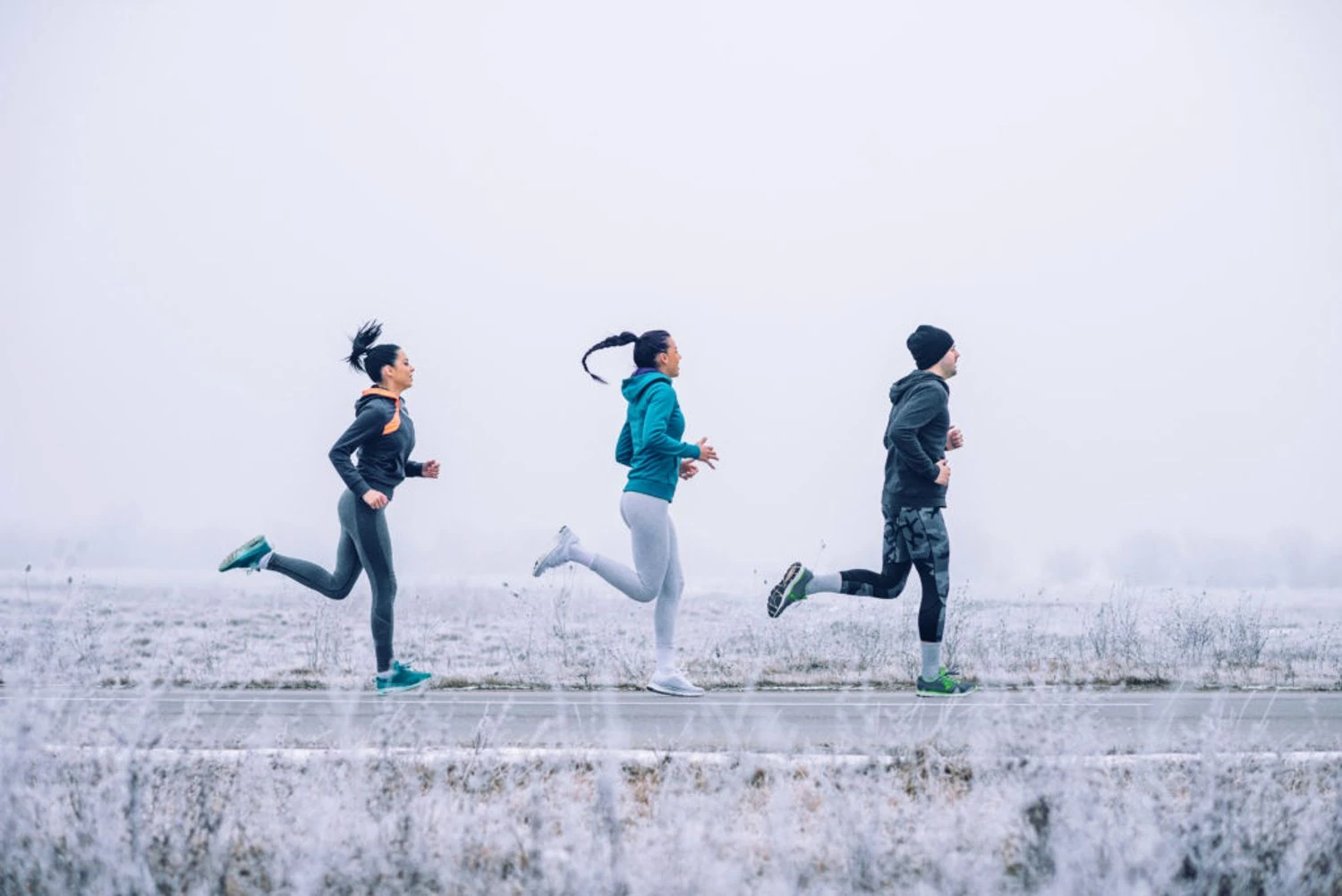
Information agency «Ukrainian National News»
Subject in the field of online media; media identifier – R40-05926
This resource is intended for persons who have reached the age of 21.
All rights reserved. © 2007 — 2025
Kyiv • UNN
• 458 views
Fitness trainer Anastasiia Ishchenko shared tips on how to properly exercise outdoors in cold weather. She emphasized the importance of warm-up, layered clothing, proper breathing, and nutrition to avoid hypothermia and injuries.
Outdoor activities in late autumn can be very effective if you know how to prepare properly. Cold stimulates calorie burning, strengthens immunity, and increases endurance, but at the same time creates risks of hypothermia and injuries. Fitness trainer Anastasia Ishchenko told UNN journalist how to dress, breathe, eat, and adapt to outdoor workouts in autumn.
Outdoor activities in winter can be more beneficial than they seem at first glance. Cold stimulates calorie burning, strengthens immunity, and increases the body’s endurance. But low temperatures require a special approach: improper clothing, excessive load, or ignoring the body’s signals can quickly lead to hypothermia, injuries, or a cold.
Before going out into the cold, warm up at home. Light squats, arm swings, bends, and jumps will help you warm up your muscles and prepare your heart and lungs. This will undoubtedly reduce the risk of injuries and allow the body to adapt better and faster to the low temperature outside.
It is important to carefully monitor the body’s signals. Chills, pale skin, headache, or sore throat are reasons to stop training. She added that autumn and winter training should be planned for the daytime, as morning and late evening in winter or late autumn are the coldest.
Proper clothing is the key to successful and safe training.
The main principle is “layering.” A base layer, such as thermal underwear, wicks moisture away from the skin. A middle layer – a fleece jacket – retains heat. An outer layer – for example, a jacket – protects against frosty wind.
Anastasia notes that it is also necessary to insulate the extremities – socks and gloves should be warm and comfortable so as not to restrict blood circulation. Gloves should keep warm even when wet, and a hat or buff should cover the ears and face. Shoes should be chosen with a water-repellent sole and tread to prevent slipping.
You need to start slowly, namely – give the body time to adapt to low temperatures. You don’t need to go outside – and immediately run from the entrance, for example, wait a few minutes.
According to her, it is better to breathe through the nose during frosty training – this slightly warms the air entering the lungs and reduces irritation of the respiratory tract.
The trainer also emphasizes the importance of finishing the workout: “Don’t stop abruptly. Gradually reduce the intensity so that the body cools down without stress. Then immediately change into dry warm clothes,” she says.
10 simple habits that will make you healthier17.03.25, 17:27 • 62283 views
The most common mistake, according to her, is to go hungry for training, because in the cold the body burns more calories, and without energy it begins to “eat” its own reserves. This is not only ineffective, but also dangerous, because blood sugar levels can drop sharply, which causes a deterioration in well-being. But sugary drinks or energy drinks are also not the best idea. They sharply increase glucose levels, and then cause a drop in energy – this can lead to trembling or weakness in the cold.
The ideal time to eat before a workout is 60–90 minutes. Cold air and heavy food can cause stomach cramps. It is better to choose warm, light meals.
In the cold, the body expends more energy to warm up… so before training, you should drink a warm drink, for example, herbal tea or even a little warm milk, and eat a light snack rich in carbohydrates – as an option, a bowl of porridge with nuts to maintain energy. After training, the meal should be protein-carbohydrate for recovery.
Running in the frost should be at a moderate pace so as not to overload the heart. Strength exercises, on the contrary, are better done dynamically, with your own weight, so that the body does not freeze.
Before strength training, an active warm-up is mandatory: 5–7 minutes of jumping in place, circular movements of the shoulders, knees, torso rotations. Movements should be slower than in the gym to avoid sudden loads. It is also important not to stand still for a long time. When you just wait, the body cools down quickly.
The main thing is to listen to your body and not take risks. It is important to adhere to three basic principles, including keeping warm, doing everything gradually, and… remembering safety. This is very important. Then winter training can be very effective and enjoyable.
Yoga, stretching, pilates outdoors at this time are possible at temperatures not lower than –5°C, and provided that the place is not windy.
Yoga in the cold is a risk of injury. Muscles simply do not warm up, and any deep stretching can be dangerous. If you want to practice outdoors, it is better to limit yourself to a short warm-up or breathing exercises in warm clothes, and do the main session at home.
The price of a dream: how much does it cost to raise a professional footballer?03.10.25, 12:02 • 36758 views
Alona Utkina
